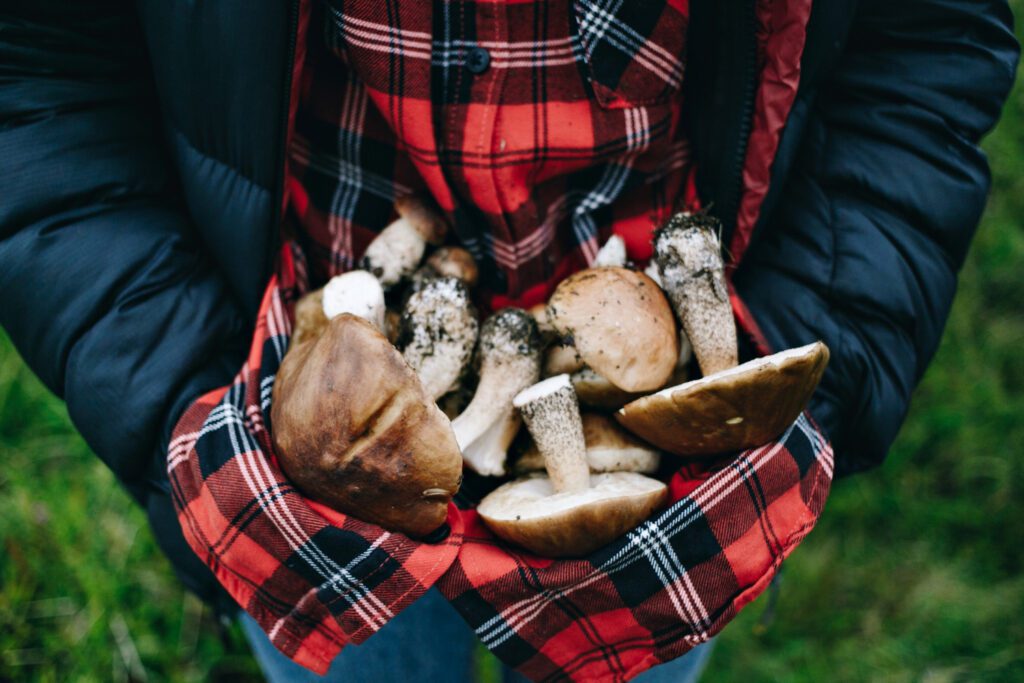Autumn is a magical season for mushroom enthusiasts. Even if you haven’t yet had the chance to explore the forests, there is still plenty of time to enjoy one of nature’s most rewarding activities—mushroom foraging. According to experts, the mushroom season continues well into the colder months, stopping only when frost and snow arrive. Yet, many people make critical mistakes that can turn what should be a delightful experience into a disappointing or even unsafe one. This guide will provide everything you need to know to maximize your mushroom harvest while staying safe and prepared.
Understanding the best mushrooms for autumn
Mushrooms thrive in damp, forested environments, and autumn is an ideal time for picking. Early in the season, the forests are abundant with boletus mushrooms, and soon after, honey fungus begins to appear. Later in the season, green-cap mushrooms emerge and continue growing until the first frost. Moisture is the key factor for a successful mushroom harvest. Without sufficient rainfall, mushroom stems can stretch unnaturally, become prone to pests, and spoil quickly.
While the forest offers a diverse selection of mushrooms, it is vital to only pick mushrooms you can confidently identify. Beginners often fall into the trap of experimenting with unfamiliar varieties, risking the possibility of poisoning. The safest options include well-known edible species such as boletus, chanterelles, and red-capped mushrooms. Avoid rare or exotic types unless you are highly experienced. Dr. Emily Watson, a mycology lecturer at the University of Cambridge, emphasizes, “Choosing familiar species significantly reduces the risk of accidental poisoning and ensures a safe foraging experience.”
Essential equipment for a safe and successful foraging trip
Preparation is crucial before heading into the forest. Experts recommend planning your route and checking the weather forecast. Dressing appropriately is equally important: wear light, flexible clothing that allows freedom of movement while protecting you from cold and insects. Bring a natural container such as a woven basket rather than a plastic bag. Plastic containers can cause mushrooms to spoil faster, allowing pests to infest the collection.
According to Thomas Greene, a mycologist and author based in the United States, “The right equipment can make all the difference. A breathable basket preserves mushroom integrity and prevents spoilage.” When it comes to harvesting, there is a widespread misconception about cutting mushrooms. Mushrooms should never be cut; they must be carefully pulled from the ground. This technique preserves the mycelium, allowing mushrooms to regrow in the same spot. After removing a mushroom, gently press the soil or moss to fill the empty space, protecting the remaining fungi from drying out or being attacked by pests.
Timing your foraging for maximum yield
Mushroom growth is most active during early morning hours when the forest is quiet and undisturbed. Even if other foragers are present, there is still plenty of fungi to discover. Experienced mushroom hunters often return to the same trails and are surprised by mushrooms they initially overlooked. Arriving at the forest early not only reduces competition but also increases your chances of finding fresh, healthy mushrooms.
Once harvested, mushrooms should be cleaned and processed as soon as possible. Delaying this step can lead to infestation by insects or spoilage, especially during warmer autumn days. According to the European Mycological Association, over 60% of spoilage occurs when mushrooms are left unprocessed for more than 24 hours.
Processing and preserving your mushroom harvest
Once you return from the forest, the next step is deciding how to use your mushrooms. While fresh mushrooms offer the best flavor, there are several ways to preserve them for later use.
Marinating was a traditional method but requires significant time and alters the taste and texture. Freezing is increasingly popular and works well for both raw and lightly cooked mushrooms. Dried mushrooms are another excellent option, ideal for soups, sauces, and risottos. Regardless of the preservation method, fresh mushrooms remain the most flavorful and versatile for culinary use. Dr. Lucia Moreno, a nutrition specialist at the University of Barcelona, notes, “Proper preservation ensures nutritional value and flavor are maintained, providing a consistent ingredient for seasonal dishes.”
Practical advice and common mistakes to avoid
Foragers can benefit from practical tips to make the most of their excursions. Consider the following points:
- Plan your route and study the forest areas in advance.
- Wear light, breathable clothing and protective gear against insects.
- Use a woven basket for collection rather than plastic bags.
- Harvest mushrooms by pulling them, not cutting.
- Process mushrooms immediately after collection to avoid spoilage.
Additionally, it is important to avoid common mistakes that beginners often make:
- Picking mushrooms you cannot confidently identify.
- Using plastic containers instead of breathable baskets.
- Cutting mushrooms instead of pulling them, which damages the mycelium.
- Delaying cleaning and processing, increasing spoilage risks.
- Ignoring weather conditions and wearing inappropriate clothing.
Delicious recipes for fresh mushroom lovers
For those fortunate enough to gather a bountiful harvest, cooking with fresh mushrooms is a rewarding experience. A classic mushroom stew can be made using fresh boletus, diced vegetables, olive oil, and vegetable broth. The rich aroma and earthy taste of the mushrooms elevate the dish, creating a memorable autumn meal. Another popular option is mushroom croquettes, combining sautéed mushrooms with a creamy base, then frying to golden perfection. These recipes highlight how fresh mushrooms can transform simple ingredients into gourmet dishes. Chef Anna Larson from New York City comments, “Fresh mushrooms have a depth of flavor unmatched by any other ingredient, turning simple meals into culinary highlights.”
Final thoughts on autumn mushroom foraging
Autumn mushroom foraging is not only a culinary adventure but also an opportunity to enjoy nature and develop valuable skills. By preparing adequately, identifying mushrooms correctly, harvesting responsibly, and preserving your collection efficiently, you can enjoy a safe and rewarding experience. Remember, mushrooms continue to grow until frost, so there is ample opportunity to explore and experiment. Whether you cook them fresh, freeze them, or dry them for future meals, mushrooms offer endless possibilities to enhance your seasonal cuisine.
Summary of key advice
- Only pick mushrooms you can confidently identify to avoid risks.
- Use a woven basket for collection to prevent spoilage.
- Pull mushrooms carefully to protect the mycelium.
- Harvest early in the morning for the freshest mushrooms.
- Clean and process mushrooms promptly to maintain quality.
- Consider freezing, drying, or marinating as preservation options.
- Enjoy culinary creativity by incorporating mushrooms into diverse recipes.
Autumn mushroom foraging is an activity that combines nature, skill, and gastronomy. With the right knowledge and preparation, even beginners can enjoy the forest’s bounty while ensuring a safe and flavorful experience.









